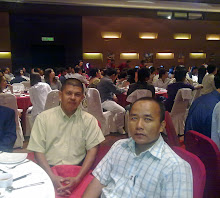Tuesday, 14 June 2011
San Antonio, Texas-- (Kitco News) Gold should trade
to just over $1,600 an ounce by the end of 2011 and silver should be
flirting with $50 an ounce as governments will need to maintain a loose
monetary policy despite the phasing out of stimulus packages in the
U.S., according to the director of a major research firm.
Philip Newman, research director of GFMS, said in an interview on the sidelines of the International Precious Metals Institute’s Precious Metals Conference here there may be too much focus in the markets on the second quantitative easing versus a possible third program.
“I think irrespective if there is no QE3 that comes into the market, the U.S. governments and all other governments frankly, in a sense, still have to maintain fairly loose monetary policy given how slow or how stubborn the rise in GDP growth has been and continues to be,” Newman said.
He said that even though at times there might be a healthy increase in GDP growth, the underlying economy still has unemployment rates that are still stubbornly high.
“So, if you have that background then, the outlook for inflation remains fairly upbeat, so investors in commodities and precious metals - gold and silver - we think, would still return to the market later this year,” he said. “What that then tells us that the outlook for precious metals prices is fairly upbeat.”
Newman said investment demand continues to be important in silver and that drove prices up, so the lack thereof now also contributes to the weakness. He said at the same time there is a much stronger underlying demand for silver, principally from the industrial sector, a fact that is sometimes forgotten.
As for scrap, there again is a contrast between gold and silver, said Newman. In gold, he said, the scrap is dominated by jewelry and is price sensitive, which means there is an immediate reaction when prices move up. That allows for price expectation influences, he said.
Silver is different, said Newman, noting that the largest area of scrap supplies are photographic supplies and industrial uses. Jewelry and silverware are much less important but can play a role, he said.
Newman said the silver scrap situation is a difficult one to call.
“We see scrap supply this year perhaps still drift lower or perhaps maybe remain unchanged,” he said.
Some of the falling photographic supply perhaps could offset some of the increases seen in jewelry supply, Newman noted. “But if prices continue to strengthen, then we could see a further robust increase in the jewelry sector,” he said.
By Daniela Cambone of Kitco News dcambone@kitco.com; Terry Wooten and Cecylia Tulikowski-Denison contributed to this story.
Philip Newman, research director of GFMS, said in an interview on the sidelines of the International Precious Metals Institute’s Precious Metals Conference here there may be too much focus in the markets on the second quantitative easing versus a possible third program.
“I think irrespective if there is no QE3 that comes into the market, the U.S. governments and all other governments frankly, in a sense, still have to maintain fairly loose monetary policy given how slow or how stubborn the rise in GDP growth has been and continues to be,” Newman said.
He said that even though at times there might be a healthy increase in GDP growth, the underlying economy still has unemployment rates that are still stubbornly high.
“So, if you have that background then, the outlook for inflation remains fairly upbeat, so investors in commodities and precious metals - gold and silver - we think, would still return to the market later this year,” he said. “What that then tells us that the outlook for precious metals prices is fairly upbeat.”
Newman said investment demand continues to be important in silver and that drove prices up, so the lack thereof now also contributes to the weakness. He said at the same time there is a much stronger underlying demand for silver, principally from the industrial sector, a fact that is sometimes forgotten.
As for scrap, there again is a contrast between gold and silver, said Newman. In gold, he said, the scrap is dominated by jewelry and is price sensitive, which means there is an immediate reaction when prices move up. That allows for price expectation influences, he said.
Silver is different, said Newman, noting that the largest area of scrap supplies are photographic supplies and industrial uses. Jewelry and silverware are much less important but can play a role, he said.
Newman said the silver scrap situation is a difficult one to call.
“We see scrap supply this year perhaps still drift lower or perhaps maybe remain unchanged,” he said.
Some of the falling photographic supply perhaps could offset some of the increases seen in jewelry supply, Newman noted. “But if prices continue to strengthen, then we could see a further robust increase in the jewelry sector,” he said.
By Daniela Cambone of Kitco News dcambone@kitco.com; Terry Wooten and Cecylia Tulikowski-Denison contributed to this story.
Subscribe to:
Post Comments (Atom)
Post Catagories
- Agama / Hukum-Hakam (1)
- Aktiviti (5)
- Gold Saving / Investment (106)
- Simpanan / Pelaburan Emas (40)
- Ucapan / Wish (6)
- Zakat (2)
HIJRAH DINAR PRICE
HIJRAH SILVER PRICE
KITCO SPOT PRICE
MALAYSIAN SPOT PRICE
Shout Box
About Me
Followers
Powered by Blogger.

0 comments:
Post a Comment